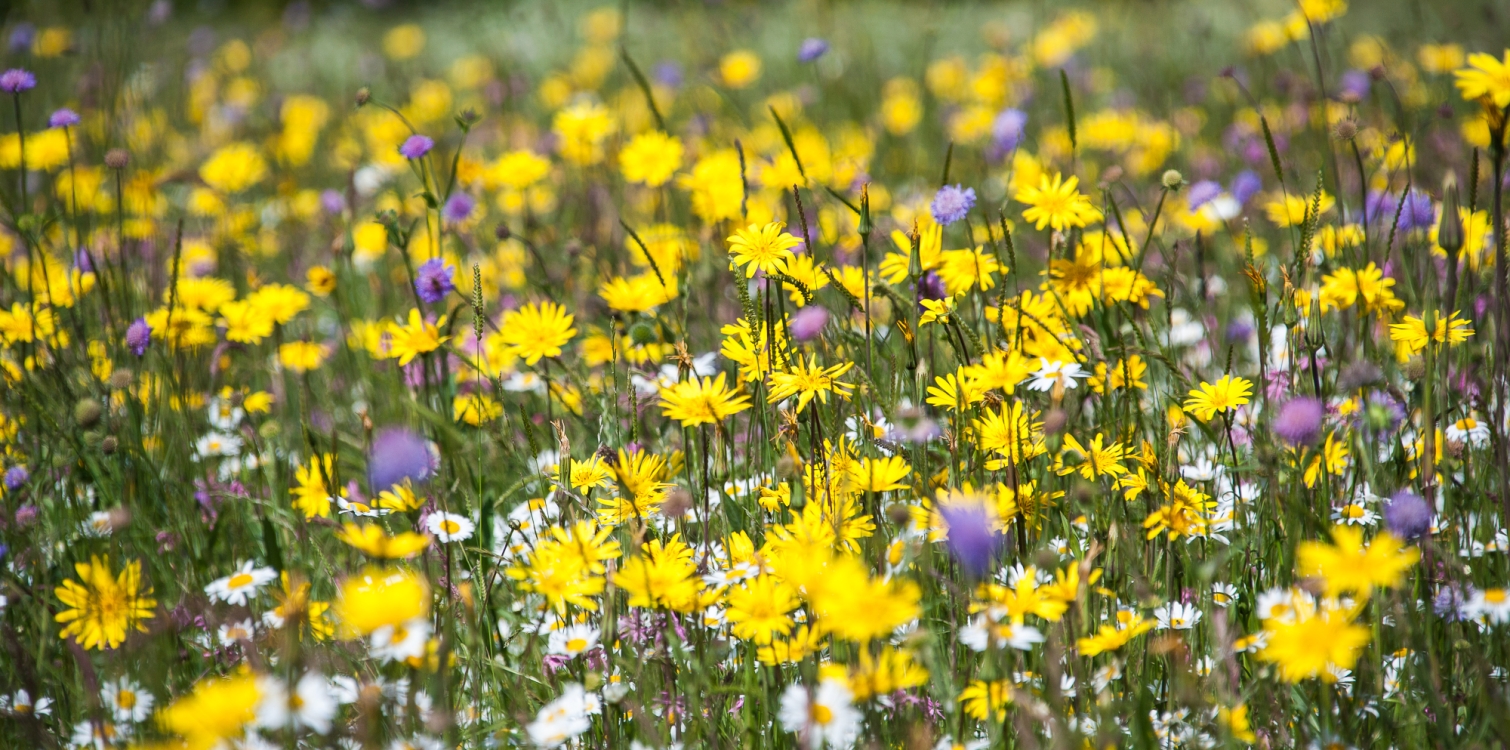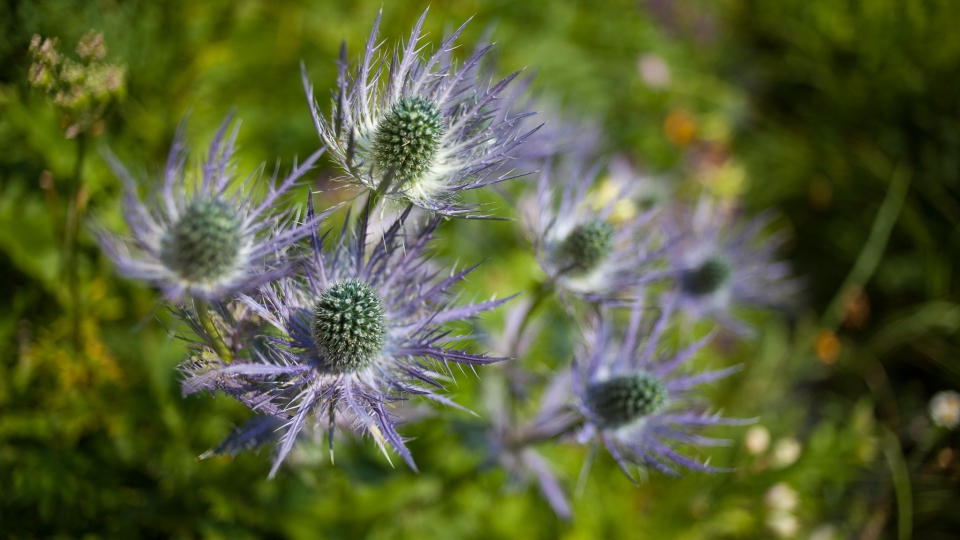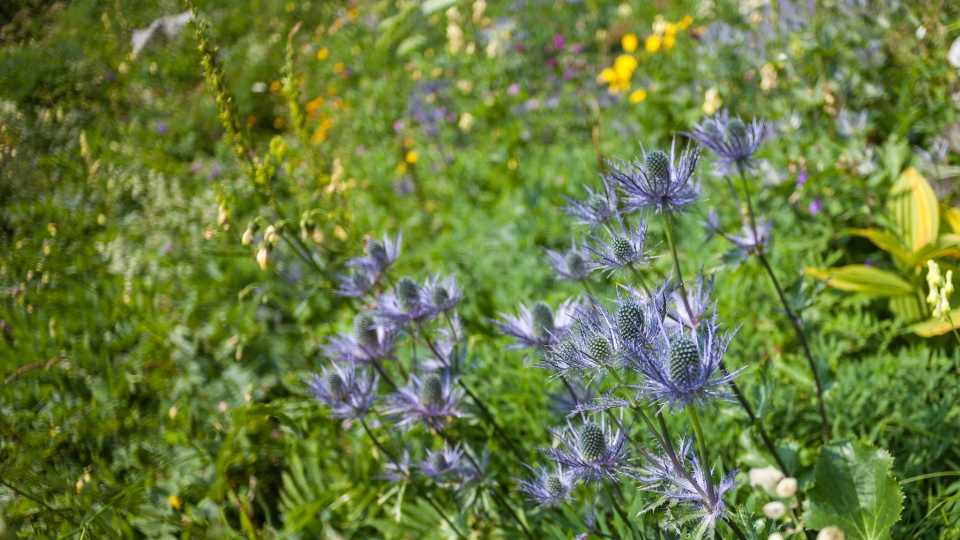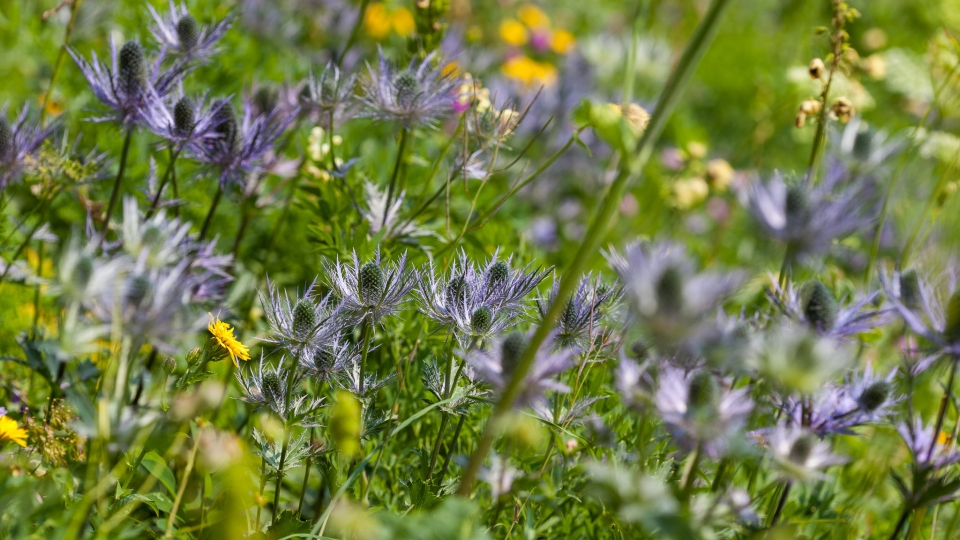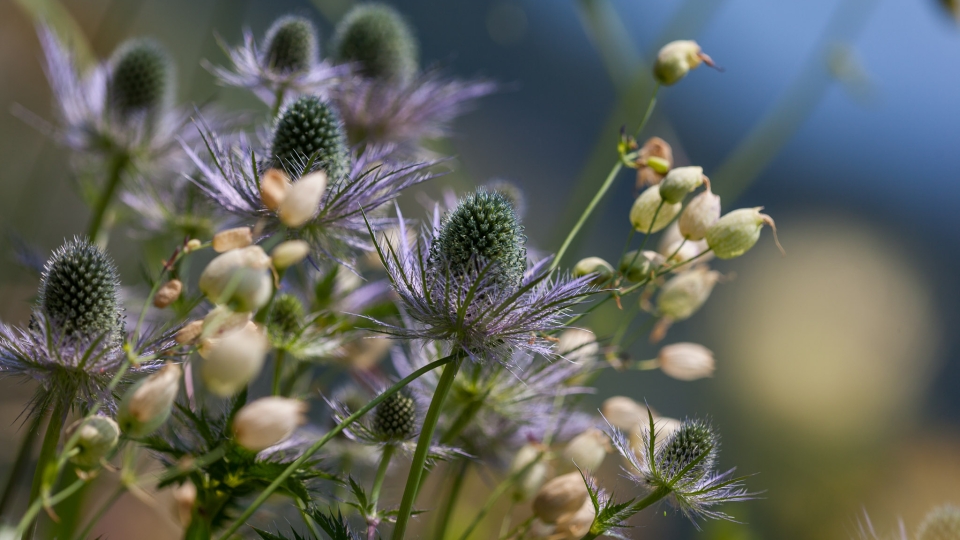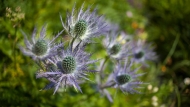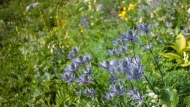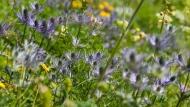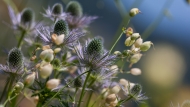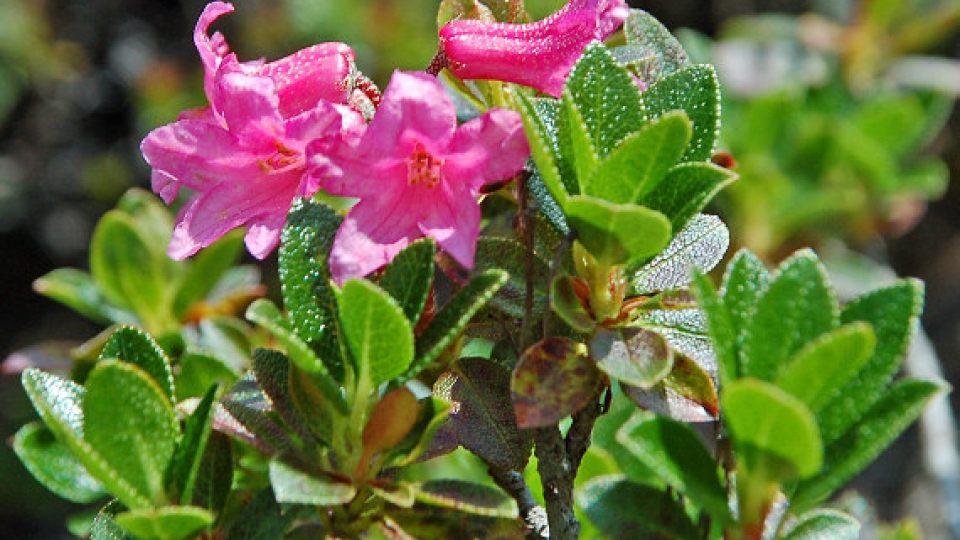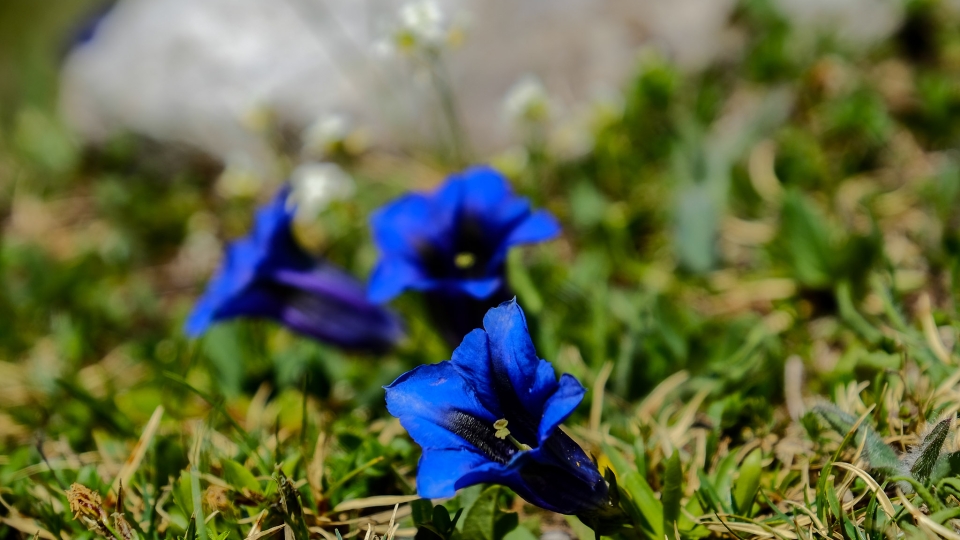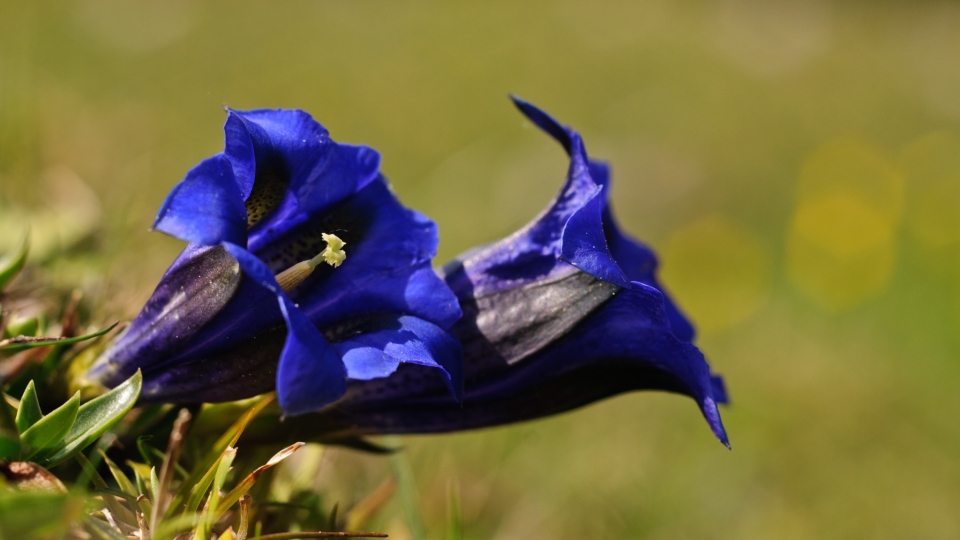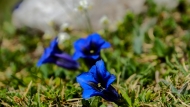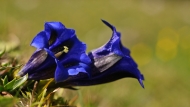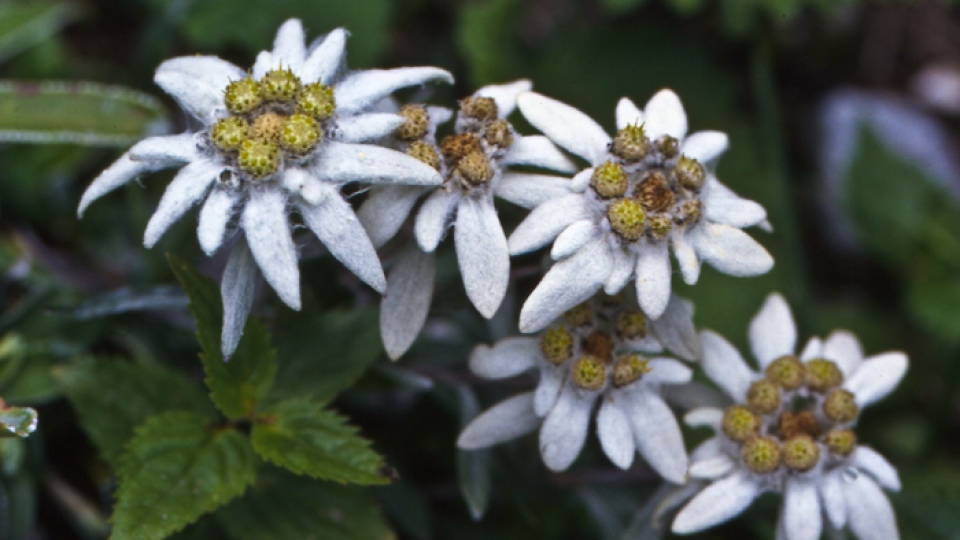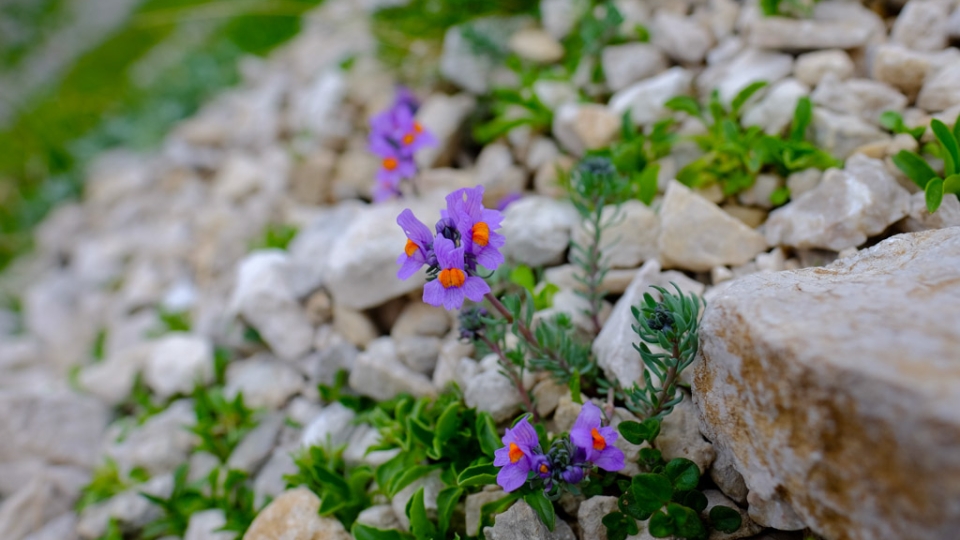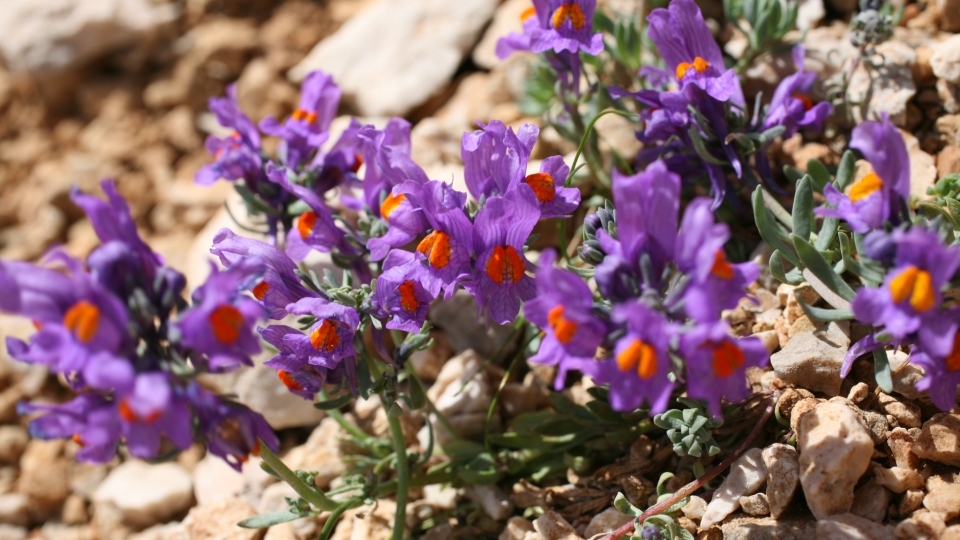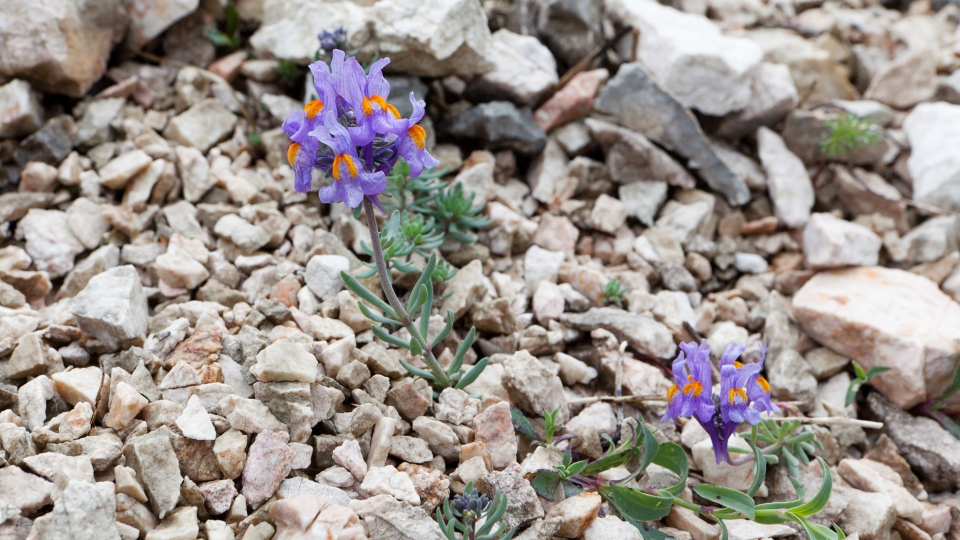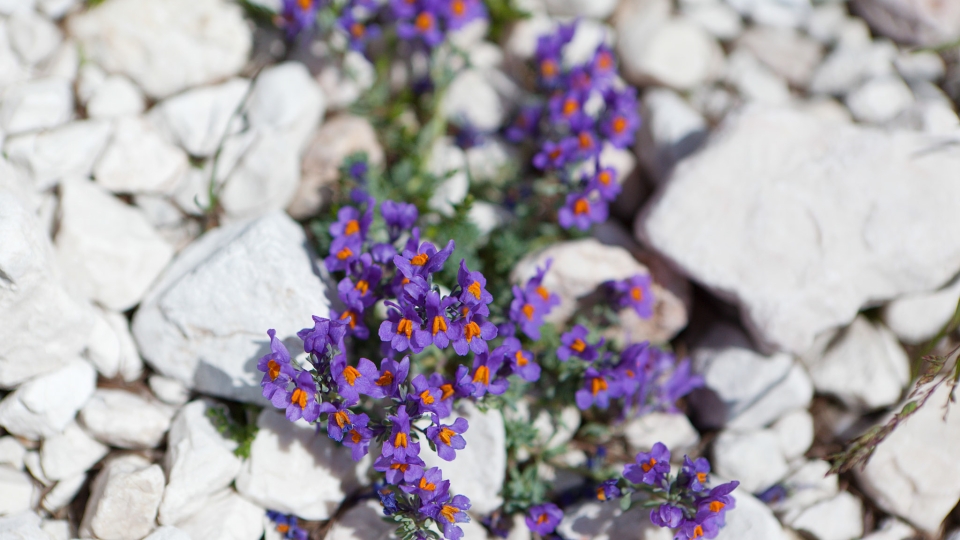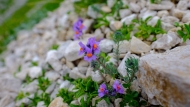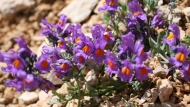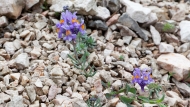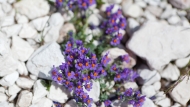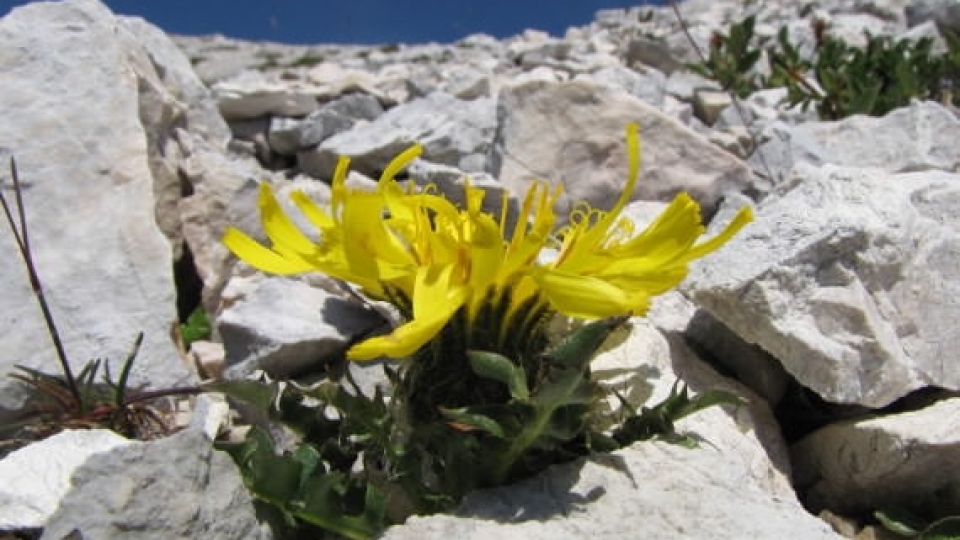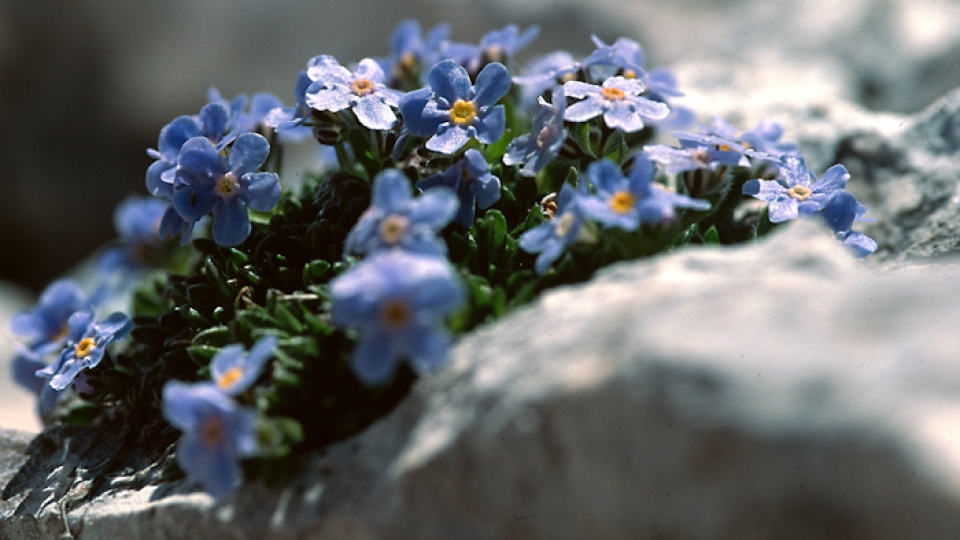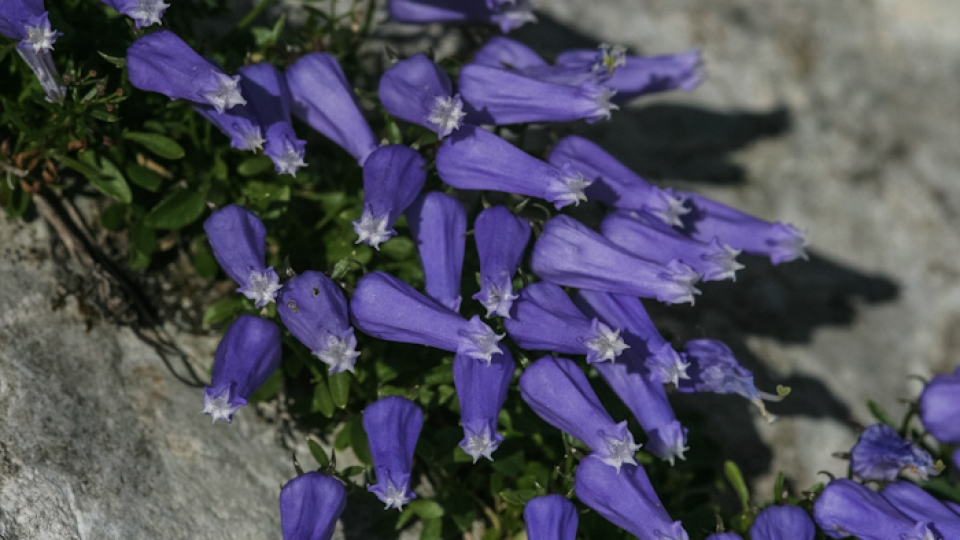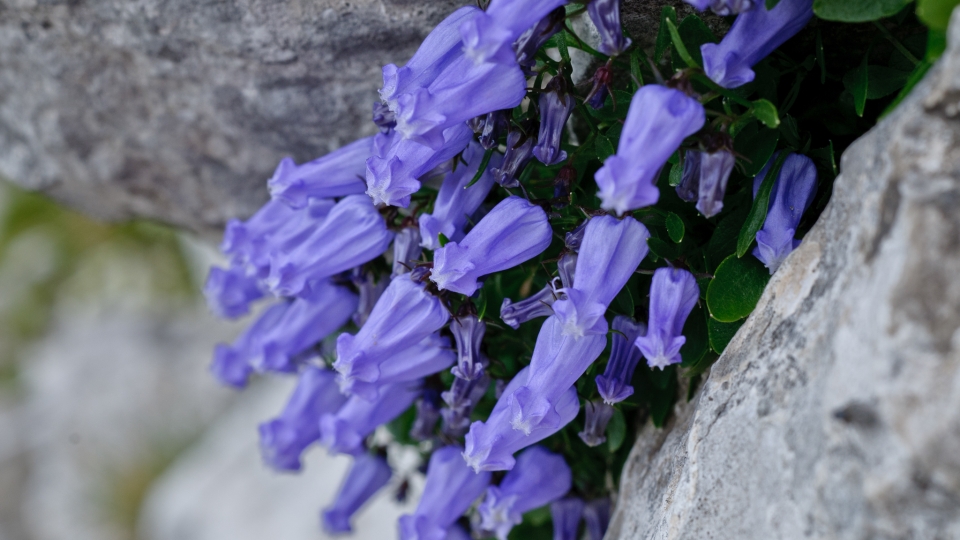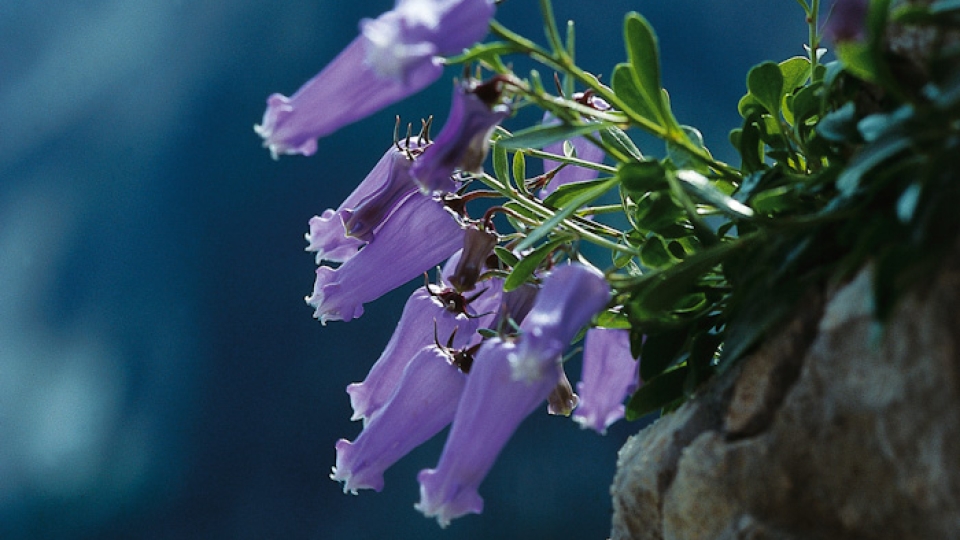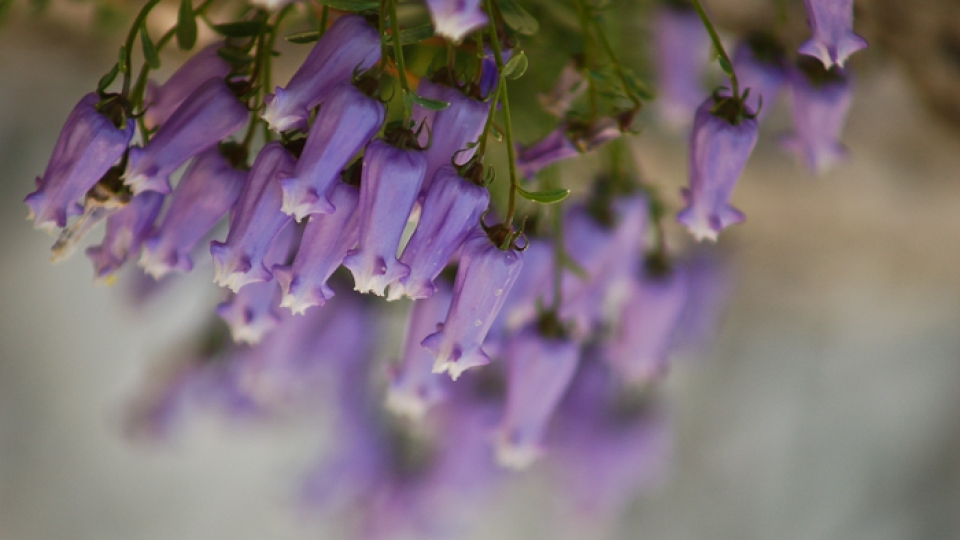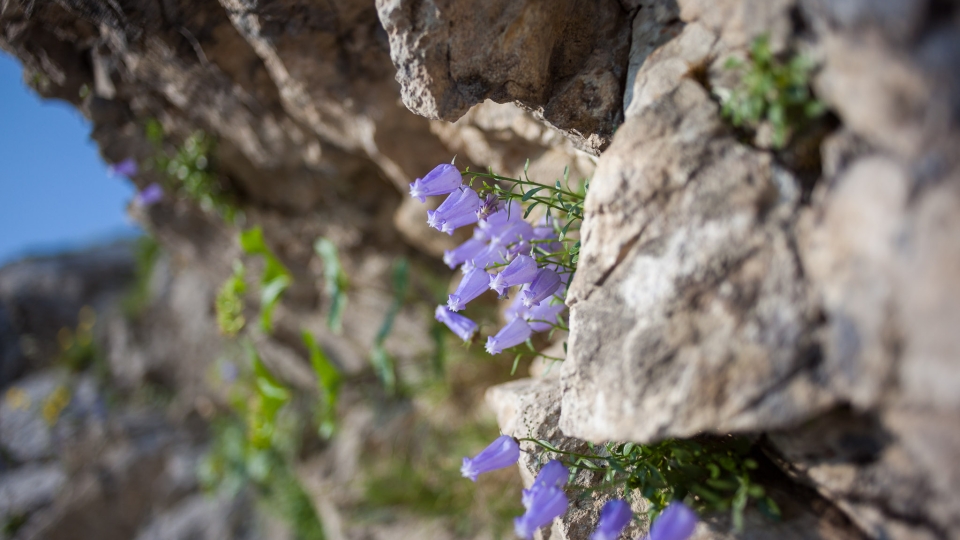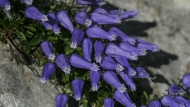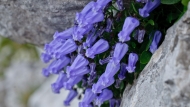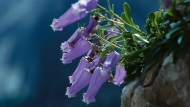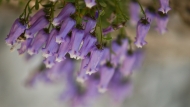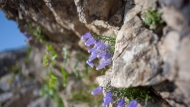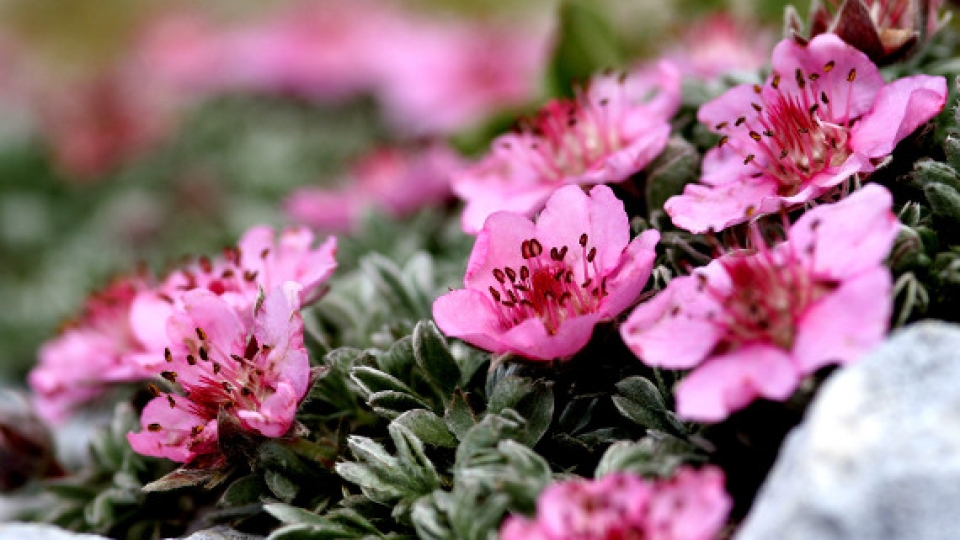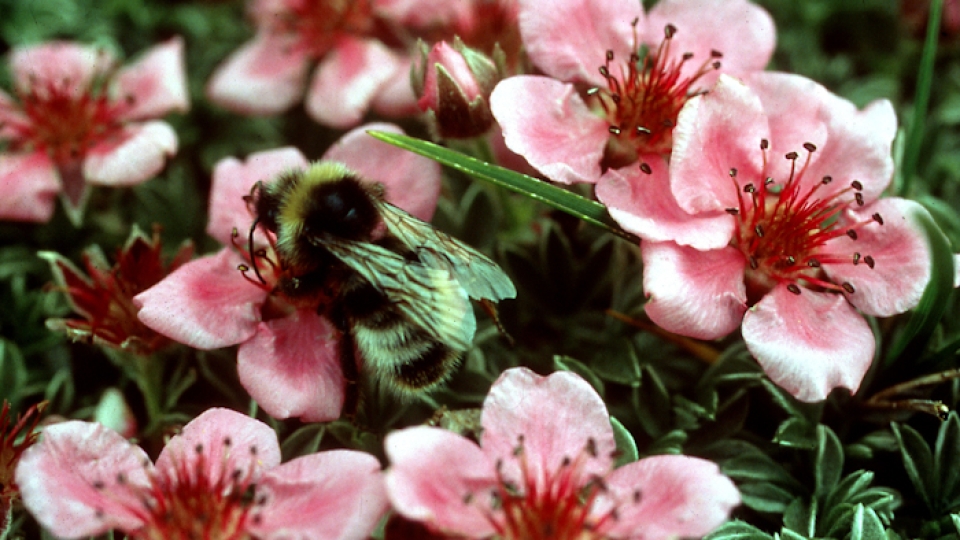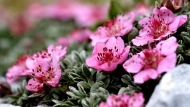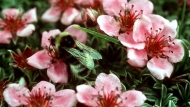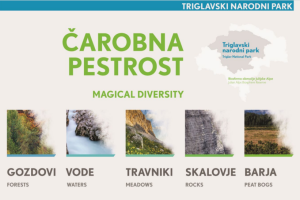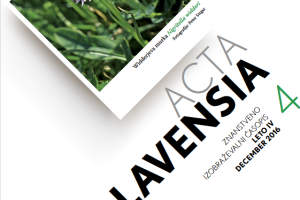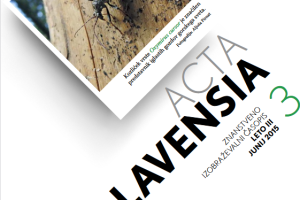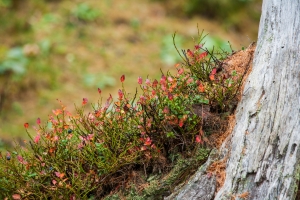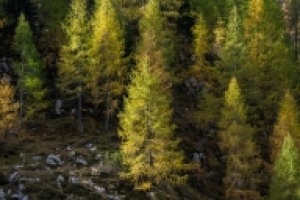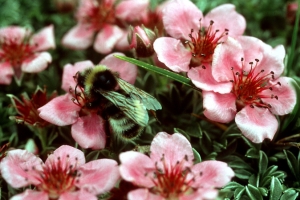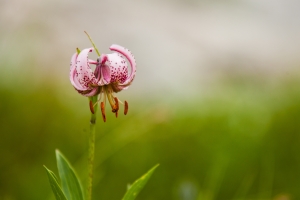Alpine eryngo
The Apine eryngo (Eryngium alpinum) flowers from June to September, normally every second year. It grows in open, sunny and rather humid grasslands, former hay meadows and overgrown gravel patches near the tree line.
The Alpine eryngo belongs to the Apiaceae family and is a close relative of parsley and caraway.
In the Triglav National Park it is most commonly found in the area of Črna prst. Due to indiscriminate collection this delicate plant was brought nearly to the verge of extinction in certain sites, which led to its early protection in 1922. The Aine eryngo is also known as the ‘queen of the alps’.
Hairy alpenrose
The hairy alpenrose (Rhododendron hirsutum) is a compact low shrub. The inflorescence is terminal with flowered clusters. Normally rose-pink, the corolla is tubular with five spreading lobes. The leaves are evergreen; the leaf margin has a small scalloped edge with long bristly hairs projecting outward.
The hairy alpenrose is similar in appearance to the rusty-leaved alpenrose (Rhododendron ferrugineum), which grows on non-carbonate (acid) soils in the area of the Mangrtsko sedlo pass.
It thrives on rocky carbonate soils and is commonly found amidst dwarf pines and larch trees at the tree line.
Clusius' gentian
Gentiana clusii (Gentiana clusii) is one of the typical plants whose blossoms adorn the limestone mountain pastures and rocky meadows in spring months. This perennial is in bloom from early spring to July.
A close relative of Clusius' gentian is Gentiana acaulis, which grows on acidic soil.
Large flowers are singular and dark blue. Lower leaves form a rosetta but the stem leaves are smaller and lower in number. Clusius' Gentian is named after botanist Carolus Clusius who was the first to describe it.
Edelweiss
The edelweiss (Leontopodium alpinum) is a perennial that grows to a height of up to 20 cm. Each bloom consists of five to six small yellow clustered spikelet-florets surrounded by fuzzy white petals (bracts) that have given the plant its name (Edelweiss is German for 'noble-white').
The edelweiss was the first protected plant species in Slovenia.
The plant blooms between July and September. It is pollinated by flies and beetles. Leaves and flowers are covered with white hairs which protect the plant that grows on extremely dry and windy sites from temperature loss and excessive evaporation. The edelweiss prefers rocky grasslands, rock crevices and gravel.
Alpine toadflax
The alpine toadflax (Linaria alpina) is a sprawling or scrambling alpine plant of high-altitude scree slopes. The long and extensive root system helps the plant to root in the unstable bedrock. The leaves are shiny green and the flowers a combination of purple and yellow.
Torrential waters may move the alpine toadflax to lower-lying areas where it continues to grow.
Pollination is rather demanding as the nectar is stored in the long spur. Because of its complex flower, the alpine toadflax can only be pollinated by insects with a long proboscis, e.g. bumblebees. It flowers from July to September.
Triglav hawksbeard
The Triglav hawksbeard (Crepis terglouensis) is a low perennial plant which slightly resembles a dandelion. It belongs to the aster family. The flowers consist of hundreds of tiny tongue-shaped petals forming an inflorescence.
In the Triglav National Park, the Triglav hawksbeard grows best on the southern slopes of Triglav and above the Velo polje alp.
Fruits are dry and covered in hairs. The entire plant contains bitter principles. It flowers from August to September. It thrives on scree, in particular in clay and humid sites.
King of the Alps
The King of the Alps (Eritrichium nanum) is a cushion plant with pale blue flowers. It grows well on grasslands with gravel and in rock crevices high in the mountains. With its low growth, strong roots and hairy surface the plant is well adapted to harsh winds and low temperatures.
The King of the Alps is one of the four plants named after Slovenia's highest mountain, Triglav.
It is similar to the alpine forget-me-not, which thrives in similar sites but has larger leaves and never grows as a spreading mat.
Zois' bellflower
Zois' bellflower (Campanula zoysii) is among the most typical plants of Slovenia's mountains. Its flowers are unique in the genus in that they are pinched together and puckered at the mouth forming a start shaped ruff at the tips. It grows tightly wedged in limestone crevices.
The mouth on a Zois' bellflower is too narrow for insects to enter. They have to make a hole in the corolla in order to pollinate the plant.
The Zois' bellflower is endemic, which means that it grows in the limited geographical area of the South-eastern Alps. The plant is named in honor of its discoverer, botanist Karl von Zois. It was studied, described and named by a known botanist Franz Xaver von Wulfen.
Triglav rose
The Triglav rose (Potentilla nitida) or the pink cinquefoil likes sunny slopes. It grows on gravel, rocky glasslands and in crevices. The silvery grey cushion plant produces pink-red blossoms in mid-summer.
The Triglav rose is one of the symbols of the Triglav National Park. It is closely connected with the legend of the gold-horned goat, Zlatorog, from whose shed blood the flower grew. When Zlatorog nibbled at the magical flower petals, its health was restored.
The leaves are three-lobed and hairy on both sides. Potentilla nitida was first found on the slopes below Triglav by Balthasar Hacquet. Thinking he found a new, not yet described species, he named the plant after the mountain near the site.

